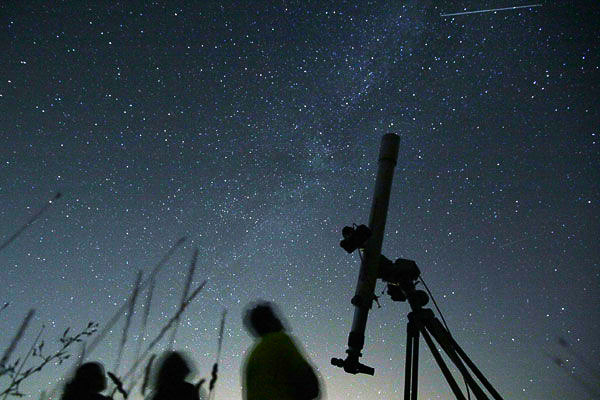Stargazing is a slept-on winter activity, mostly because Chicagoans would rather (with good reason) be getting drunk inside. But winter is an opportune time for it, since the season features plenty of astronomical events worth catching. Sure, you might have to drive out into the boonies for the very best view, but during a global pandemic, what else do you have to do? Here’s a rundown of celestial phenomena to watch for from Michelle Nichols, director of public observing at the Adler Planetarium.
1 The Great Conjunction
When:On December 21, right after sunset for about 60 to 90 minutes, our favorite will-they-or-won’t-they couple makes it official. Jupiter and Saturn will be one degree apart — and the closest they’ve been from Earth since 1623, in case you want another reason to call this year “unprecedented.”
How to see it:Stand anywhere with a clear view to the southwest. You don’t need binoculars or a telescope, but low to moderate magnification will help you differentiate both planets (to the naked eye, they’ll appear as one big star) so you can better decide which planet you want to move to.
2 The Quadrantid meteor shower
When:On the night of January 2 and into the next morning, you should be able to see a few dozen meteors an hour.
How to see it:Go outside, face north, and look up. The moon’s brightness that night might interfere with your view, so stand near a structure that blocks the moon, like a building or a tree with big branches. Nichols recommends going 60 to 70 miles from downtown to a state park like the Green River State Wildlife Area. Just make sure you call beforehand to confirm that they haven’t given up all their reservations to hunters.
3 Catching up with Orion the Hunter
When:Orion is always in the night sky, but winter is one of the best times to appreciate him: The sky is less hazy when the air is cold and dry. And guess what? The hottest parties of 2021 are at his belt — down and to the left, you’ll see Sirius, the brightest star in our sky.
How to see it:In January, go outside and face east to southeast. You should see Orion sideways. In February and March, Orion’s position in the sky will change, so rely on a stargazing app to locate him.



